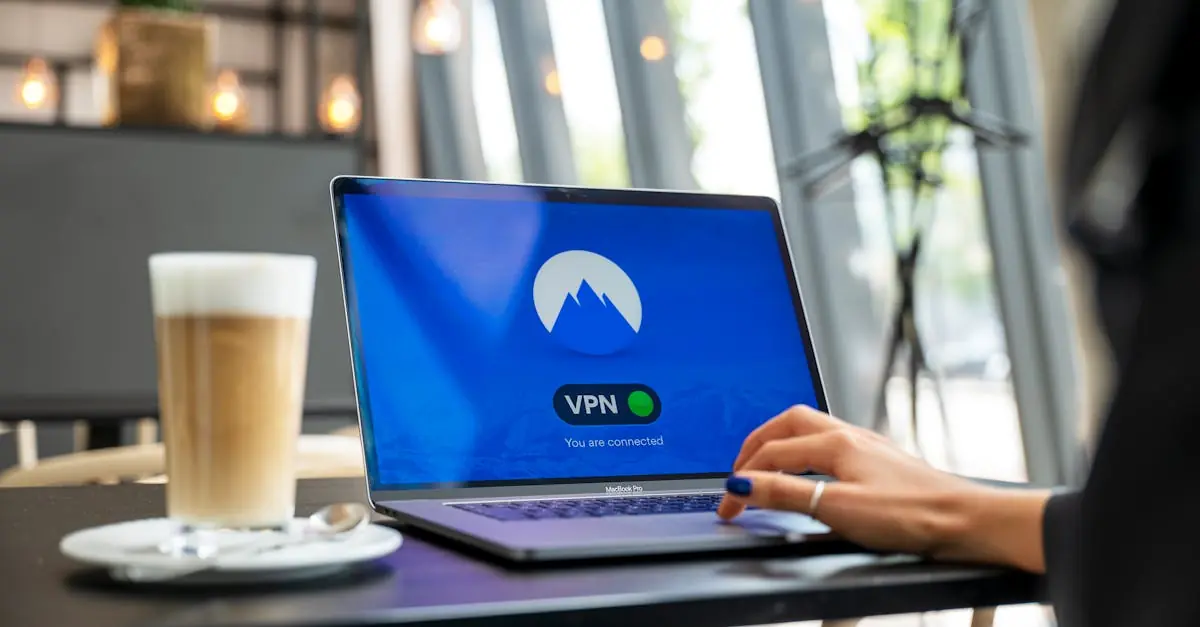In a world where passwords are the keys to our digital kingdoms, keeping them secure is crucial. If you’re still using that old Yahoo password from 2010, it’s time for a change! Updating your password on your iPhone is easier than finding a cat video on the internet. Seriously, it takes just a few taps.
Table of Contents
ToggleUnderstanding Yahoo Password Management
Password management plays a crucial role in protecting personal information. It’s essential to maintain strong, unique passwords to guard against unauthorized access.
Importance of Password Security
Password security protects personal data from breaches. A strong password combines letters, numbers, and symbols, making it harder for intruders to guess. Regularly updating passwords reduces vulnerability to cyberattacks. Using different passwords for various accounts enhances security further. Statistics show that around 81% of data breaches are linked to weak or stolen passwords, underscoring the necessity for robust password practices.
Recognizing When to Update Your Password
Updating passwords should occur regularly to maintain security. Signs indicating a password change include using the same password for multiple accounts, experiencing unusual account activity, or receiving notification of a data breach. Additionally, updating passwords every three to six months is advisable to combat evolving threats. If an old password dates back several years, it’s time for a refresh to strengthen account security.
Steps to Update Your Yahoo Password on iPhone
Updating a Yahoo password on an iPhone requires just a few simple steps. Following these instructions ensures better account security.
Accessing the Yahoo App
First, locate the Yahoo app on the iPhone’s home screen. Tap the app icon to open it. Users must sign in if they aren’t logged in already. After signing in, the main interface appears, showing the inbox and other options. This step is essential for accessing account settings.
Navigating to Account Settings
Next, look for the profile icon in the top left corner of the screen. Tapping on this icon opens a menu with multiple options. Select the “Account Info” option to proceed. This section provides necessary account details. Here, users can find the option to manage their password, which is crucial for updating it securely.
Updating Your Password
Finally, tap on “Security” to access password settings. Here, users will see an option for changing the password. After selecting it, input the current password followed by the new password. It’s important that the new password meets Yahoo’s security guidelines. Confirm the new password to finalize the change. Following these steps enhances account protection significantly.
Troubleshooting Common Issues
Encountering issues during the password update process can frustrate users. Ensure a stable internet connection, as connectivity problems often hinder updates. Users may experience lag in the Yahoo app, requiring them to restart the app or their iPhone. Sometimes, outdated app versions impede updates as well; users should consider checking the App Store for updates.
Problems During the Update Process
Frequent issues include entering incorrect current passwords or failing to meet Yahoo’s password security guidelines. Users might also face an inability to access the account settings due to app glitches. If the new password doesn’t conform to criteria, such as length or character variety, the update will be rejected. Unexpected error messages can appear, suggesting the need to retry the process after ensuring all requirements are met.
Recovery Options for Forgotten Passwords
Users forgetting their Yahoo password can easily recover it through the app. When prompted, select the “Forgot Password?” option on the login screen. After this, Yahoo will guide users through a verification process via their recovery email or phone number. Providing the necessary information sends a temporary password or link to reset the password. Follow the prompts carefully to ensure a successful recovery.
Best Practices for Password Creation
Creating strong passwords is essential for digital security. Strong passwords consist of at least 12 characters, combining uppercase letters, lowercase letters, numbers, and symbols. Remembering different passwords can be challenging, especially since over 81% of data breaches arise from weak or stolen passwords. Adopting unique passwords for various accounts diminishes the risk of unauthorized access.
Using Strong Passwords
Strong passwords play a crucial role in safeguarding online accounts. Mixing different character types helps create complexity and enhances security. Avoiding commonly used passwords, such as “123456” or “password,” further protects accounts. Regular updates, performed every three to six months, can help keep passwords secure against evolving threats. Using phrases or a combination of unrelated words can also generate memorable yet robust passwords.
Password Managers and Their Benefits
Password managers simplify managing multiple passwords securely. These tools generate strong passwords and store them in an encrypted format, allowing users to access their accounts easily. By offering autofill capabilities, password managers eliminate the need to remember every password, reducing vulnerability to phishing attacks. Many users appreciate the added convenience, as password managers can sync across devices. Investing in a reputable password manager enhances security and streamlines the process of updating passwords regularly.
Updating a Yahoo password on an iPhone is essential for maintaining account security. By following the straightforward steps outlined in the article users can swiftly enhance their protection against unauthorized access. Regularly changing passwords not only safeguards personal information but also helps in adapting to evolving cyber threats.
Implementing strong password practices such as using unique combinations of letters numbers and symbols is crucial. Additionally utilizing password managers can simplify the process of managing multiple accounts while ensuring robust security. Keeping an eye on account activity and recognizing when a password change is necessary further strengthens overall digital safety. Prioritizing these practices will lead to a more secure online experience.



